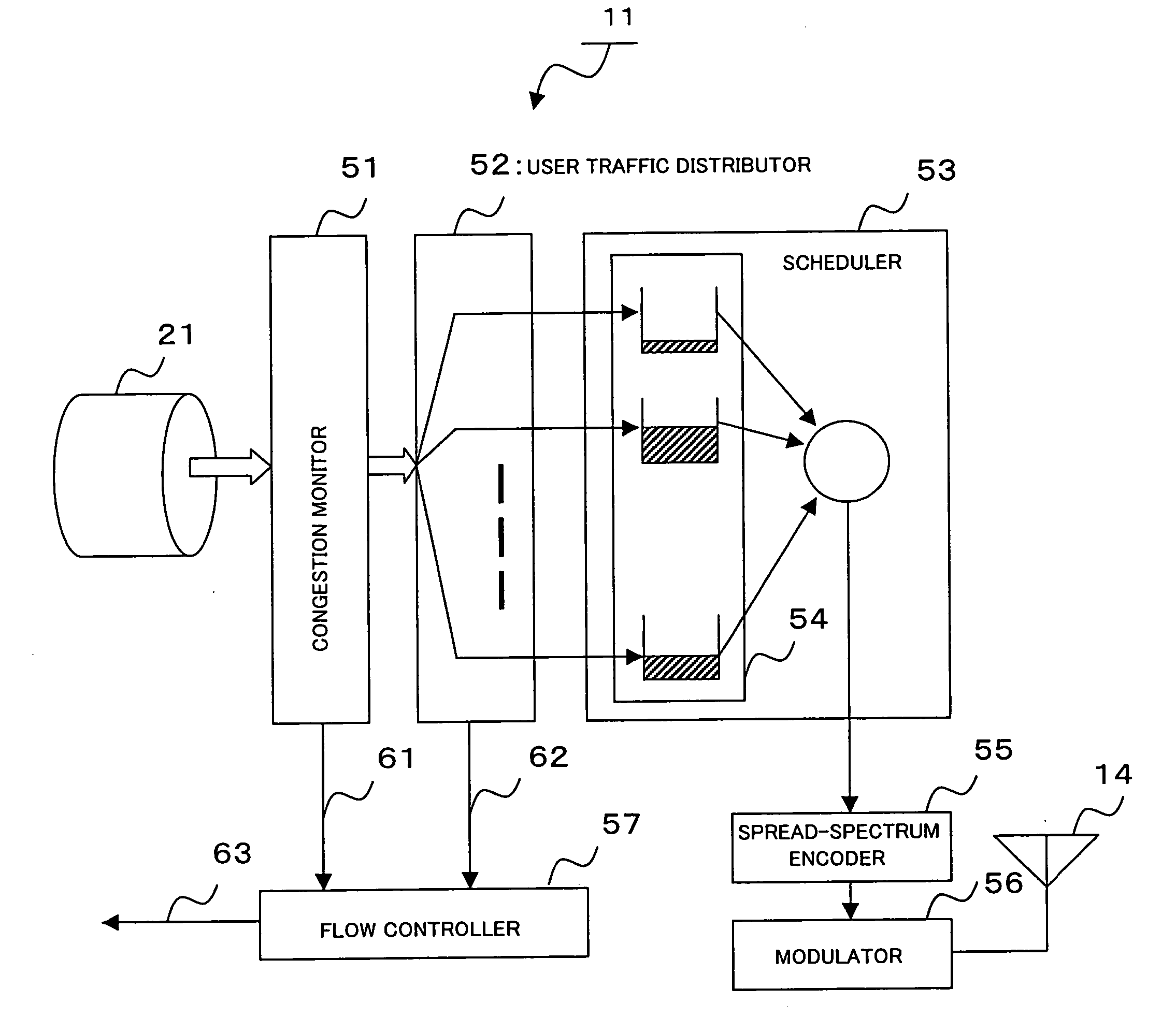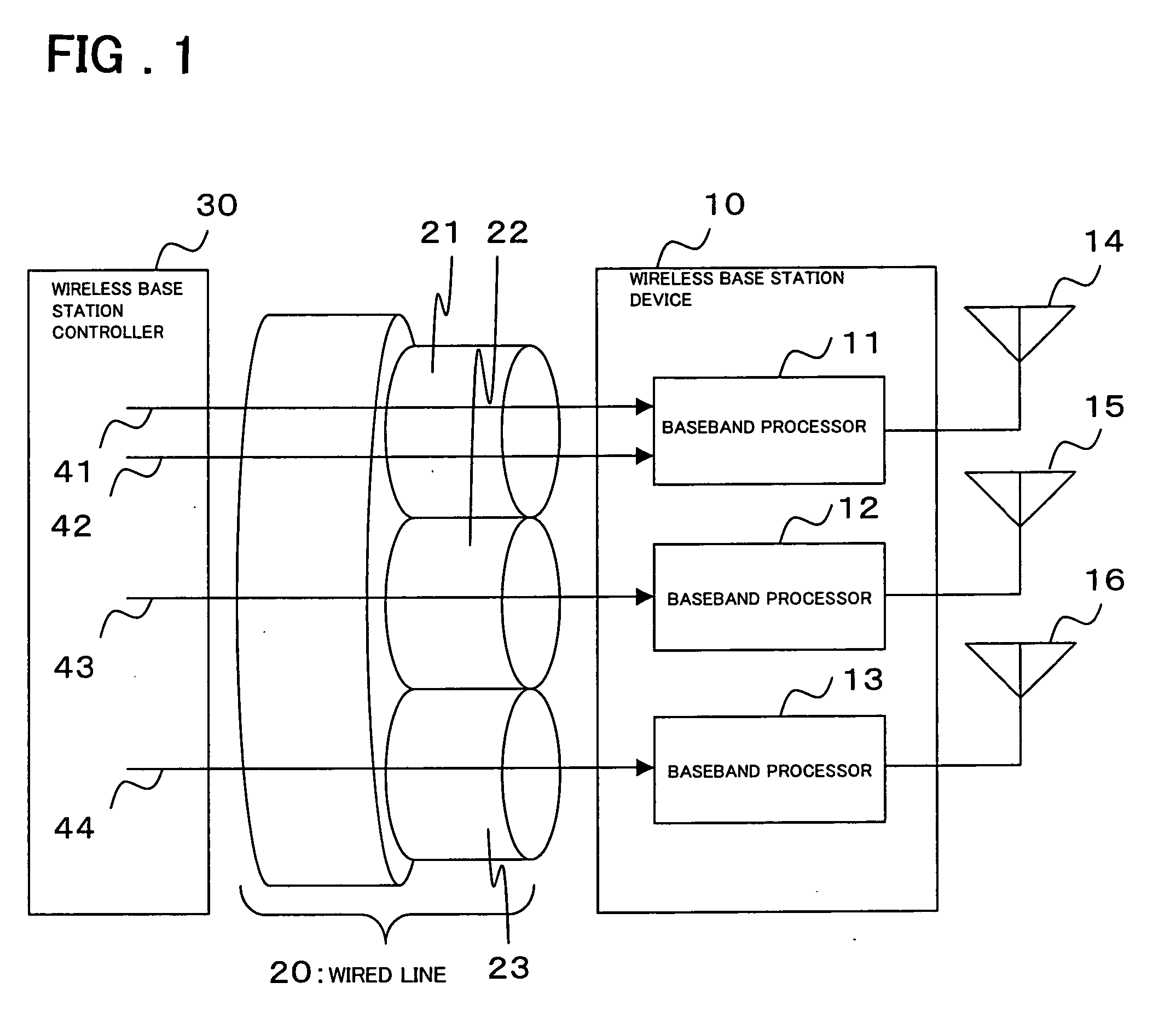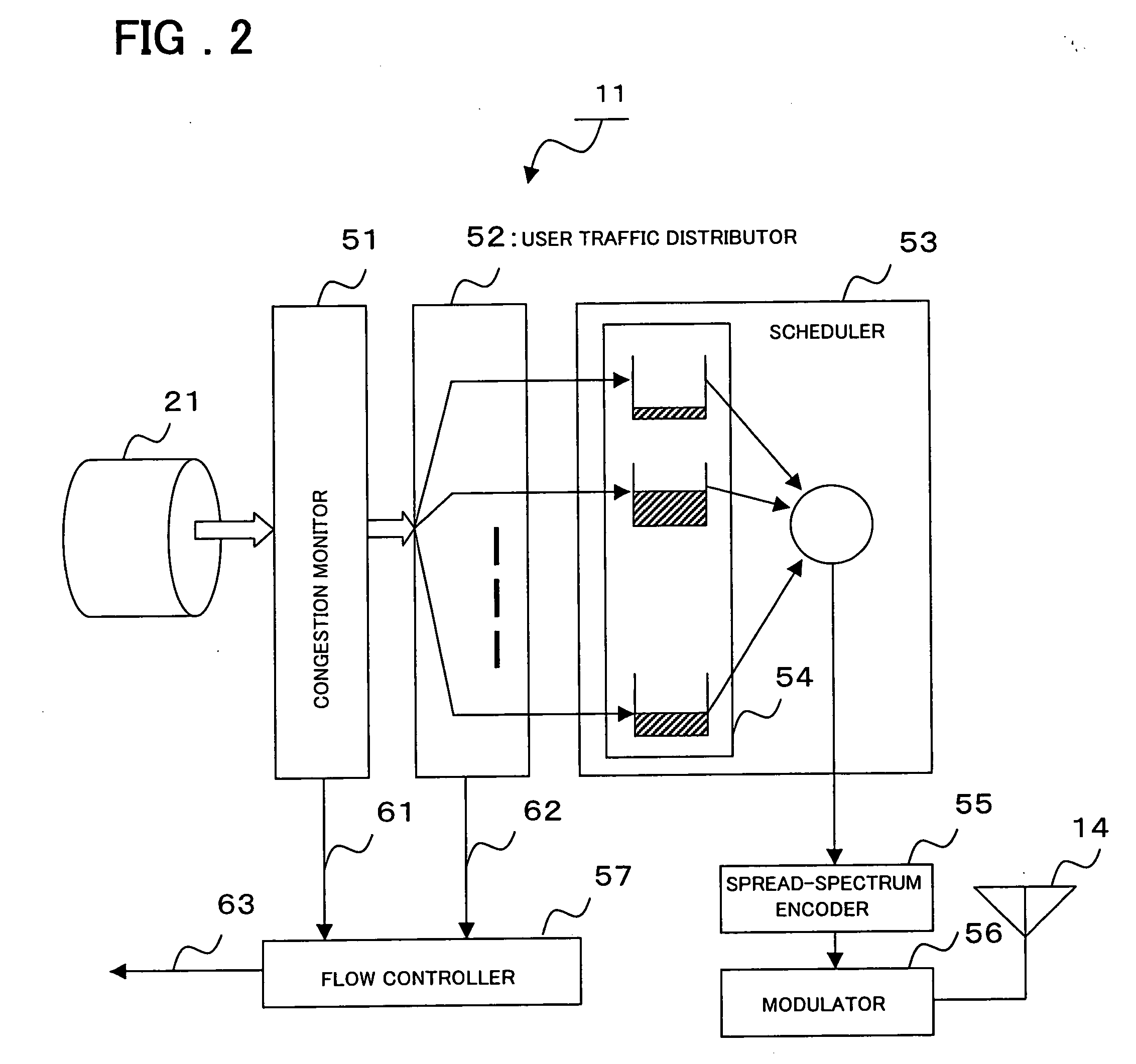Wireless base station device and rate control method thereof
a wireless base station and wireless base station controller technology, applied in data switching networks, instruments, frequency-division multiplexes, etc., can solve the problem of increasing the bandwidth cost of the wired line between the wireless base station and the wireless base station controller to meet the increased throughput of the wireless line, and achieve the effect of reducing the bandwidth cost of the wired line and efficiently controlling the wired lin
- Summary
- Abstract
- Description
- Claims
- Application Information
AI Technical Summary
Benefits of technology
Problems solved by technology
Method used
Image
Examples
first embodiment
[0022]FIG. 1 is a block diagram showing the configuration of the connection between a wireless base station device in a first embodiment of the present invention and a wireless base station controller. Referring to FIG. 1, a wireless base station device 10 comprises baseband processors 11, 12, and 13 each of which has an antenna 14, 15, or 16, respectively. The wireless base station device 10 is connected to a wireless base station controller 30 via a wired line 20. In the description below, the wireless base station device 10 covers three cells (cells #1, #2, and #3) and has baseband processors 11, 12, and 13, one for each cell. Note that the number of cells is not limited to three.
[0023] Each of the baseband processors 11, 12, and 13 once stores a user traffic from the wireless base station controller 30 into the buffer, performs spread spectrum modulation according to the data traffic priority among the users in the same cell, and sends the modulated data to wireless lines via t...
second embodiment
[0045]FIG. 4 is a flowchart showing the operation of baseband processor in a second embodiment of the present invention. In FIG. 4, in a step with the same reference numeral as that in FIG. 3, the same operation is performed and therefore the description of that step will be omitted. The processing in FIG. 4 differs from the processing in FIG. 3 in that the traffic amount at congestion occurrence time is controlled considering user's priority. For example, in step S15a, the maximum holding time TMAX—flow—Priority(kj), which is the maximum holding time with priority considered, is used instead of the maximum holding time TMAX—flow.
[0046] The maximum holding time TMAX—flow—Priority(kj) with priority considered is generated by correcting the maximum holding time TMAX—flow as shown in expression (4).
TMAX—flow—Priority(kj)=α(P)*TMAX—flow Expression (4)
α(P), which is a coefficient determined according to the priority of each user, is the coefficient for a user with priority P. At this...
PUM
 Login to View More
Login to View More Abstract
Description
Claims
Application Information
 Login to View More
Login to View More - R&D
- Intellectual Property
- Life Sciences
- Materials
- Tech Scout
- Unparalleled Data Quality
- Higher Quality Content
- 60% Fewer Hallucinations
Browse by: Latest US Patents, China's latest patents, Technical Efficacy Thesaurus, Application Domain, Technology Topic, Popular Technical Reports.
© 2025 PatSnap. All rights reserved.Legal|Privacy policy|Modern Slavery Act Transparency Statement|Sitemap|About US| Contact US: help@patsnap.com



